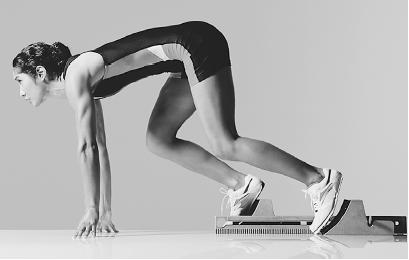Statics and Equilibrium - Real-life applications

Equilibrium and Center of Gravity in Real Objects
Before applying the concept of vector sums to matters involving equilibrium, it is first necessary to clarify the nature of equilibrium itself—what it is and what it is not. Earlier it was stated that an object is in equilibrium if the vector sum of the forces acting on it are equal to zero—as long as those forces meet at a common point.
This is an important stipulation, because it is possible to have lines of force that cancel one another out, but nonetheless cause an object to move. If a force of a certain magnitude is applied to the right side of an object, and a line of force of equal magnitude meets it exactly from the left, then the object is in equilibrium. But if the line of force from the right is applied to the top of the object, and the line of force from the left to the bottom, then they do not meet at a common point, and the object is not in equilibrium. Instead, it is experiencing torque, which will cause it to rotate.
VARIETIES OF EQUILIBRIUM.
There are two basic conditions of equilibrium. The term "translational equilibrium" describes an object that experiences no linear (straight-line) acceleration; on the other hand, an object experiencing no rotational acceleration (a component of torque) is said to be in rotational equilibrium.
Typically, an object at rest in a stable situation experiences both linear and rotational equilibrium. But equilibrium itself is not necessarily stable. An empty glass sitting on a table is in stable equilibrium: if it were tipped over slightly—that is, with a force below a certain threshold—then it would return to its original position. This is true of a glass sitting either upright or upside-down.
Now imagine if the glass were somehow propped along the edge of a book sitting on the table, so that the bottom of the glass formed the hypotenuse of a triangle with the table as its base and the edge of the book as its other side. The glass is in equilibrium now, but unstable equilibrium, meaning that a slight disturbance—a force from which it could recover in a stable situation—would cause it to tip over.
If, on the other hand, the glass were lying on its side, then it would be in a state of neutral equilibrium. In this situation, the application of force alongside the glass will not disturb its equilibrium. The glass will not attempt to seek stable equilibrium, nor will it become more unstable; rather, all other things being equal, it will remain neutral.
CENTER OF GRAVITY.
Center of gravity is the point in an object at which the weight below is equal to the weight above, the weight in front equal to the weight behind, and the weight to the left equal to the weight on the right. Every object has just one center of gravity, and if the object is suspended from that point, it will not rotate.
One interesting aspect of an object's center of gravity is that it does not necessarily have to be within the object itself. When a swimmer is poised in a diving stance, as just before the starting

By contrast, a sprinter's stance places the center of gravity well within the body, or at least firmly surrounded by the body—specifically, at the place where the sprinter's rib cage touches the forward knee. This, too, fits with the needs of the athlete in the split-second following the starting gun. The sprinter needs to have as much traction as possible to shoot forward, rather than forward and downward, as the swimmer does.
Tension Calculations
In the earlier discussion regarding the method of calculating tension in equilibrium, two of the three steps of this process were given: first, draw a free-body diagram, and second, resolve the forces into x and y components. The third step is to set the force components along each axis equal to zero—since, if the object is truly in equilibrium, the sum of forces will indeed equal zero. This makes it possible, finally, to solve the equations for the net tension.

Imagine a picture that weighs 100 lb (445 N) suspended by a wire, the left side of which may be called segment A, and the right side segment B. The wire itself is not perfectly centered on the picture-hook: A is at a 30° angle, and B on a 45° angle. It is now possible to find the tension on both.
First, one can resolve the horizontal components by the formula F x = T Bx + T Ax = 0, meaning that the x component of force is equal to the product of tension for the x component of B, added to the product of tension for the x component of A, which in turn is equal to zero. Given the 30°-angle of A, Ax = 0.866, which is the cosine of 30°. Bx is equal to cos 45°, which equals 0.707. (Recall the earlier discussion of distance, in which a square with sides 5 mi long was described: its hypotenuse was 7.07 mi, and 5/7.07 = 0.707.)
Because A goes off to the left from the point at which the picture is attached to the wire, this places it on the negative portion of the x axis. Therefore, the formula can now be restated as T B (0.707)− T A (0.866) = 0. Solving for T B reveals that it is equal to T A (0.866/0.707) = (1.22) T A . This will be substituted for T B in the formula for the total force along the y component.
However, the y-force formula is somewhat different than for x: since weight is exerted along the y axis, it must be subtracted. Thus, the formula for the y component of force is F y = T Ay + T By − w = 0. (Note that the y components of both A and B are positive: by definition, this must be so for an object suspended from some height.)
Substituting the value for T B obtained above, (1.22) T A , makes it possible to complete the equation. Since the sine of 30° is 0.5, and the sine of 45° is 0.707—the same value as its cosine—one can state the equation thus: T A (0.5) + (1.22) T A (0.707)−100 lb = 0. This can be restated as T A (0.5 + (1.22 · 0.707)) = T A (1.36) = 100 lb. Hence, T A = (100 lb/1.36) = 73.53 lb. Since T B = (1.22) T A , this yields a value of 89.71 lb for T B .
Note that T A and T B actually add up to considerably more than 100 lb. This, however, is known as an algebraic sum—which is very similar to an arithmetic sum, inasmuch as algebra is simply a generalization of arithmetic. What is important here, however, is the vector sum, and the vector sum of T A and T B equals 100 lb.
CALCULATING CENTER OF GRAVITY.
Rather than go through another lengthy calculation for center of gravity, we will explain the principles behind such calculations.
It is easy to calculate the center of gravity for a regular shape, such as a cube or sphere—assuming, of course, that the mass and therefore the weight is evenly distributed throughout the object. In such a case, the center of gravity is the geometric center. For an irregular object, however, center of gravity must be calculated.
An analogy regarding United States demographics may help to highlight the difference between geometric center and center of gravity. The geographic center of the U.S., which is analogous to geometric center, is located near the town of Castle Rock in Butte County, South Dakota. (Because Alaska and Hawaii are so far west of the other 48 states—and Alaska, with its great geographic area, is far to the north—the data is skewed in a northwestward direction. The geographic center of the 48 contiguous states is near Lebanon, in Smith County, Kansas.)
The geographic center, like the geometric center of an object, constitutes a sort of balance point in terms of physical area: there is as much U.S. land to the north of Castle Rock, South Dakota, as to the south, and as much to the east as to the west. The population center is more like the center of gravity, because it is a measure, in some sense, of "weight" rather than of volume—though in this case concentration of people is substituted for concentration of weight. Put another way, the population center is the balance point of the population, if it were assumed that every person weighed the same amount.
Naturally, the population center has been shifting westward ever since the first U.S. census in 1790, but it is still skewed toward the east: though there is far more U.S. land west of the Mississippi River, there are still more people east of it. Hence, according to the 1990 U.S. census, the geographic center is some 1,040 mi (1,664 km) in a southeastward direction from the population center: just northwest of Steelville, Missouri, and a few miles west of the Mississippi.
The United States, obviously, is an "irregular object," and calculations for either its geographic or its population center represent the mastery of numerous mathematical principles. How, then, does one find the center of gravity for a much smaller irregular object? There are a number of methods, all rather complex.
To measure center of gravity in purely physical terms, there are a variety of techniques relating to the shape of the object to be measured. There is also a mathematical formula, which involves first treating the object as a conglomeration of several more easily measured objects. Then the x components for the mass of each "sub-object" can be added, and divided by the combined mass of the object as a whole. The same can be done for the y components.
Using Equilibrium Calculations
One reason for making center of gravity calculations is to ensure that the net force on an object passes through that center. If it does not, the object will start to rotate—and for an airplane, for instance, this could be disastrous. Hence, the builders and operators of aircraft make exceedingly detailed, complicated calculations regarding center of gravity. The same is true for shipbuilders and shipping lines: if a ship's center of gravity is not vertically aligned with the focal point of the buoyant force exerted on it by the water, it may well sink.
In the case of ships and airplanes, the shapes are so irregular that center of gravity calculations require intensive analyses of the many components. Hence, a number of companies that supply measurement equipment to the aerospace and maritime industries offer center of gravity measurement instruments that enable engineers to make the necessary calculations.
On dry ground, calculations regarding equilibrium are likewise quite literally a life and death matter. In the earlier illustration, the object in equilibrium was merely a picture hanging from a wire—but what if it were a bridge or a building? The results of inaccurate estimates of net force could affect the lives of many people. Hence, structural engineers make detailed analyses of stress, once again using series of calculations that make the picture-frame illustration above look like the simplest of all arithmetic problems.
WHERE TO LEARN MORE
Beiser, Arthur. Physics, 5th ed. Reading, MA: Addison-Wesley, 1991.
"Determining Center of Gravity" National Aeronautics and Space Administration (Web site). <http://www.grc.nasa.gov/WWW/K-12/airplane/cg.html> (March 19, 2001).
"Equilibrium and Statics" (Web site). <http://www.glenbrook.k12.il.us/gbssci/phys/Class/vectors/u313c.html> (March 19, 2001).
"Exploratorium Snack: Center of Gravity." The Exploratorium (Web site). <http://www.exploratorium.edu/snacks/center_of_gravity.html> (March 19, 2001).
Faivre d'Arcier, Marima. What Is Balance? Illustrated by Volker Theinhardt. New York: Viking Kestrel, 1986.
Taylor, Barbara. Weight and Balance. Photographs by Peter Millard. New York: F. Watts, 1990.
"Where Is Your Center of Gravity?" The K-8 Aeronautics Internet Textbook (Web site). <http://wing.ucdavis.edu/Curriculums/Forces_Motion/center_howto.html> (March 19, 2001).
Wood, Robert W. Mechanics Fundamentals. Illustrated by Bill Wright. Philadelphia, PA: Chelsea House, 1997.
Zubrowski, Bernie. Mobiles: Building and Experimenting with Balancing Toys. Illustrated by Roy Doty. New York: Morrow Junior Books, 1993.
Comment about this article, ask questions, or add new information about this topic: